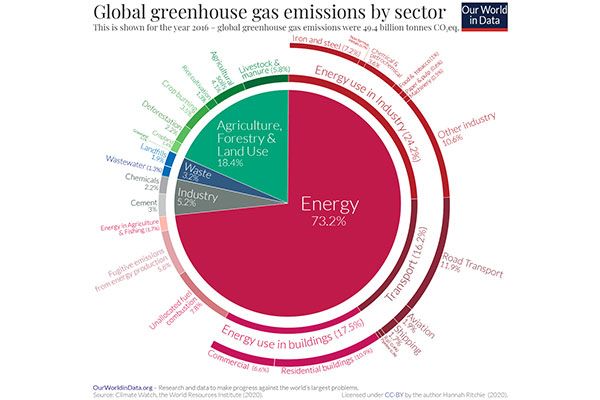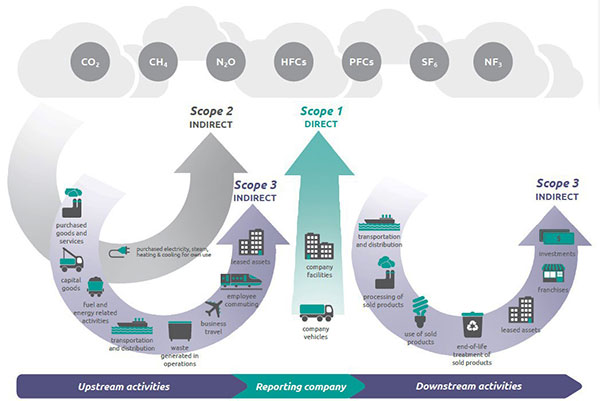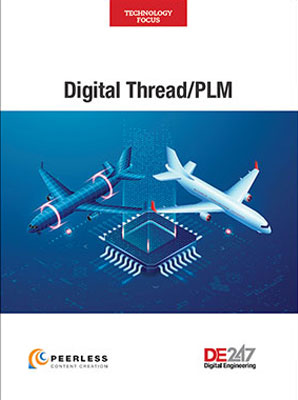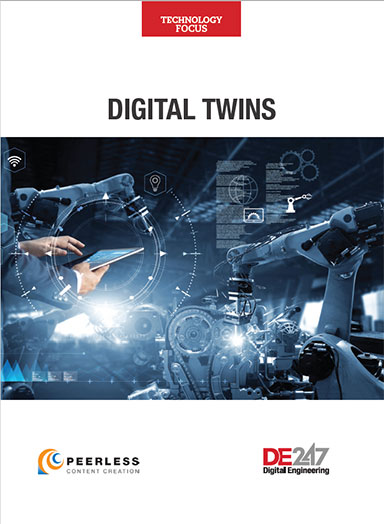PLM Plays Part in Tracking Carbon Footprint
Some of the most promising new technologies emerging are those that can calculate, manage and track the carbon emission footprint of products, processes and services.
Latest News
February 16, 2022
By Klaus Brettschneider
Climate scientists continue to warn that the world must reduce greenhouse gas (GHG) emissions to net zero by 2050, starting with a 50% reduction by 2030, to avoid the worst effects of climate change.
Mixed results of the United Nations COP26 Climate Summit in Glasgow, Scotland, last November showed that political leaders cannot meet this challenge by themselves; it will require the global business community and industry leaders as well.
As a result, measures to reduce emissions will need to be incorporated into our personal lives as consumers and increasingly in our professional roles, which can yield great impact.
The PLM Green Global Alliance was formed in 2020 to foster an international community of product lifecycle management (PLM) professionals who collaborate on use of PLM-enabling technologies to address the challenges of sustainability, climate change and energy decarbonization. One focus of the alliance is to study green technologies that can assist with the transition into a more sustainable low-carbon circular economy.
Some of the most promising new technologies emerging are those that can calculate, manage and track the carbon emission footprint of products, processes and services. Fortunately, PLM business strategies along with supporting software solutions are already available to accelerate sustainability application development.
What Is PLM’s Role?
PLM solutions, when deployed correctly, can provide the business processes and digital platforms to collect and manage product specifications and attributes at every stage of manufacturing, distribution and service. For example, in the process industry, PLM lets product developers, marketing personnel and supply chain managers track weights, production costs, nutritional values and component volumes to satisfy compliance regulations and meet environmental goals.

Using basic product data management capabilities within PLM, an engineer should be able to simulate expected carbon emissions of a new product design, then calculate and document the actual footprint during production. Just as early design decisions define the final production cost of an item, these decisions will also determine most GHG emissions. PLM provides the core functionality to roll up the carbon footprint of different design variations, suppliers, production processes, customer uses and recycling scenarios.
Recently, it has been encouraging to see enterprise PLM solution providers such as Autodesk, Dassault Systèmes, PTC, SAP and Siemens start incorporating sustainability into their governance, marketing and product portfolios. Also, a new software solution space has recently emerged in Lifecycle Sustainability Assessment (LCSA), which we contend should be considered part of the larger PLM solution ecosystem. However, much work is to be done before sustainability solutions can be fully relied upon.
Challenge of Calculating Carbon Emissions
To understand the challenges, it is necessary to examine how companies calculate their carbon footprint in 2022. Most companies rely on the Corporate Standard of the GHP Protocol to roll up and report their GHG emissions. This standard separates emissions into three scopes:
- Scope 1 addresses emissions from directly owned and managed sources (for example, emissions from manufacturing processes or the company vehicle fleet).
- Scope 2 addresses purchased energy including electricity, steam, heating and cooling. Basically, all energy a company has to acquire to run the business and its facilities.
- Scope 3 addresses indirect emissions in upstream and downstream activities. Upstream covers the supply chain to acquire materials to produce products, and downstream includes the distribution, usage and end-of-life treatment.
If companies report their emissions according to GHG Protocol they must report Scope 1 and 2 to meet the protocol standard. However, reporting on Scope 3 is voluntary, despite it often being the largest contributor to total emissions. The expectation is that if most companies report Scopes 1 and 2, the overall results from all upstream suppliers and downstream users would cover Scope 3 emissions of the producing company, and double counting would be avoided.
Numerous industries have yet to adopt these—or any—reporting practices. As a result, only a patchwork of emission reports within most industries are available, leaving an incomplete accounting of total emissions.

Small and midsize enterprises especially struggle to establish reliable emissions tracking and reporting. This makes it difficult for larger enterprises, who are their customers, to capture Scope 3 emissions along the entire supply chain. This is especially problematic because Scope 3 emissions are often five times the amount of the combined Scopes 1 and 2 emissions.
Even companies that report Scopes 1 and 2 only know their emissions at a division or plant level using a top-down approximation. While they can define targets and operational actions to reduce emissions, few know which products create what percentage of the entire footprint burden. While some companies break their emissions down to the product portfolio or business unit level, there are few standards available to measure or compare such calculations, much less validate and regulate them.
Implementing a strategy to provide accurate and verifiable carbon footprint data will require decomposing the emissions down from company- and plant-level estimates to product- and component-level actuals. While the GHG Protocol provides standards to calculate the footprint for individual products, the Product Life Cycle Accounting and Reporting Standard and ISO 14040 consider the emission of the entire product lifecycle, including Scope 3.
Yet, these standards recommend selecting only a subset of products with the biggest emission impact and not the entire portfolio. There is much work to perform and PLM can help facilitate such tasks.
Challenges and Opportunities for PLM
PLM strategies and their supporting IT systems have historically been focused on a company’s internal processes. Even when a PLM platform is implemented to improve communication and collaboration across the enterprise, these processes rarely span over the external supply and service chain.
The key challenge to provide reliable product data to help determine carbon footprint will be to collect, monitor and manage all Scope 1-3 emissions that span the entire lifecycle across the entire supply and service chain ecosystem.
If PLM professionals once thought expanding the adoption of PLM beyond engineering silos within the same company was difficult, imagine how much more challenging it will be to define and agree to PLM-specified processes, international standards, data management workflows, digital threads and analytics reporting that extend far beyond enterprise boundaries!
It remains to be seen how PLM solution providers will address these challenges and, more importantly, how quickly their customers will adopt sustainability solutions in earnest. The development and implementation of such solutions may unleash the next wave of massive investment in PLM as part of executive-driven sustainability initiatives that will dwarf earlier generations of engineering-centric PLM deployments.
As a result, the next few decades are likely to be equally challenging and rewarding for PLM professionals contributing to the transition to a more sustainable global economy.
Klaus Brettschneider is a PLM business consultant and PLM Green Global Alliance contributor.
Subscribe to our FREE magazine, FREE email newsletters or both!
Latest News






